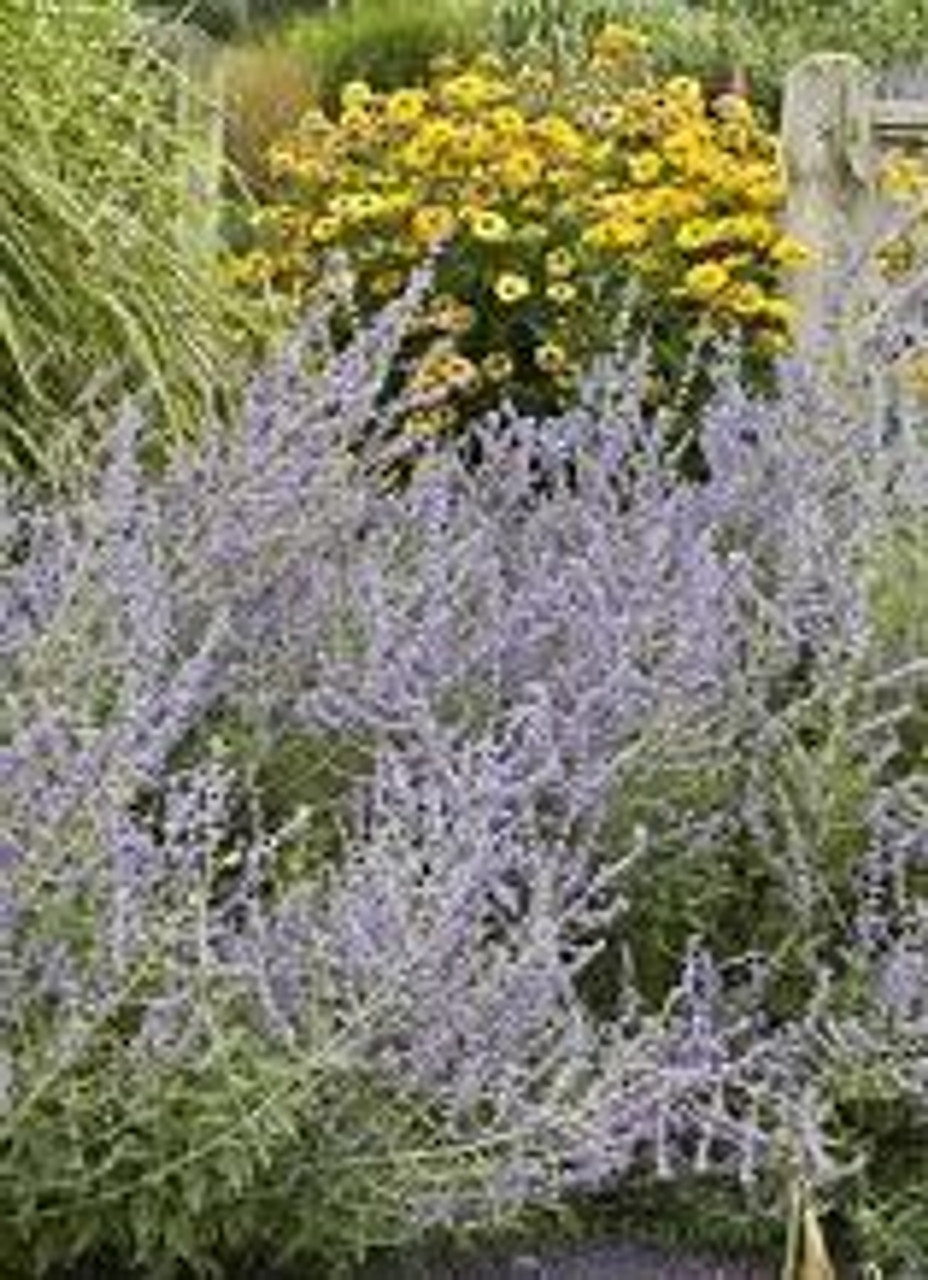Product Description
Perovskia atriplicifoliaFamily: Lamiaceae/Labiatae (mint Family); Common name: Russian Sage.
Zone 4 to 9.
Full sun. The plant for hot, dry locations.
Plants reach 3 to 4+ feet tall and 2 to 3+ feet wide,
classified as a deciduous subshrub or woody perennial.
Growth rate: Moderate, Easy to grow.
Airy spikes of lavender-blue, tubular flowers top strong stems with small, finely dissected, silvery-green leaves provides two or three months of flowers in late summer and autumn. Its loose, open habit makes this perennial an effective filler in the back of the border.
Easily grown in average, dry to medium, well-drained soil in full sun. Average to dry moisture levels are ideal, and few pests bother this plant. Russian sage is native to Afghanistan and Pakistan where it grows in gravelly or rocky sites.
Older stems are woody at the base, and younger stems are herbaceous and square in cross section. Flower stems sometimes falls over, especially if not situated in full sun. It will survive in partial shade but it will become leggy and probably need staking. If needed, plants can be pruned almost to the ground. Cut back to just above the lowest bud in early spring, before new growth, as best flowering occurs on new foliage. Start new plants from softwood tip cuttings in spring, or from semi-ripe cuttings with a heel in summer.
Click here for more ordering and shipping information. 1995 Perennial Plant Association Plant of the Year!
Russian Sage's best use may be mass plantings in the middle or rear of a flower garden to create a strong vertical background for large flowers or bold foliage. Perovskia atriplicifolia's foliage appeal continues through winter.
Ten (10) plants in quart containers per flat (or tray).
Other Details
The most important part of the plant is its root system. Healthy roots are the foundation of a healthy, vibrant plant. The type of plug container used is based on the specific needs of the plants. Perennials offered as bare root traditionally perform better when planted as bare root.Planted in a specialized mix, potted plants have well established root systems. Top growth stage will vary depending on the current life cycle and time of year when shipped. In Winter and early Spring dormant plants may be shipped. Dormant plants may be planted right away, even before the last frost date.
Most bare root varieties are field grown for at least one season, though Hemerocallis and Hosta are grown for two seasons. The bulk of the soil is removed during the harvesting process and the tops of most varieties are trimmed back to the crown. They are graded, packed in shredded aspen or sphagnum moss and stored in freezers until ready to be shipped.
See our Container Sizes and Bare Root Perennials pages for more information.
Plant information and care is provided in the Overview section, Plant Genus Page and general information is provided in the Planting Care & Guides. Additional questions can be asked on each Plant page.
Plant Spacing: Using the maximum mature spread or width of a plant to guide spacing, ensures space to grow to full size. To fill an area sooner, plant them closer together. Just remember, future thinning or transplanting may be needed.
Water: Keep a close eye on newly planted perennials, especially throughout the first growing year. Most early plant loss is due to too much or too little water!










